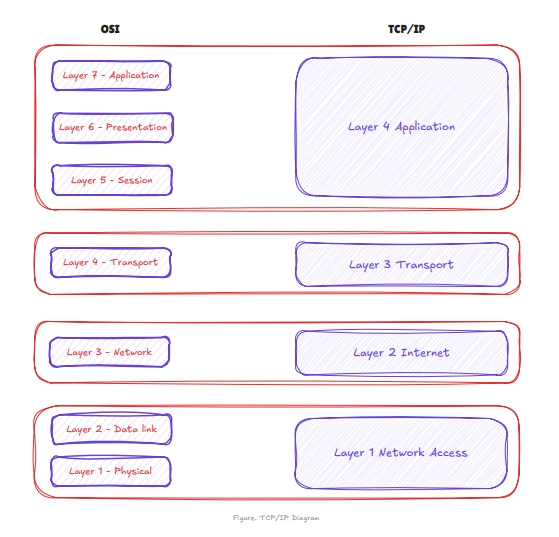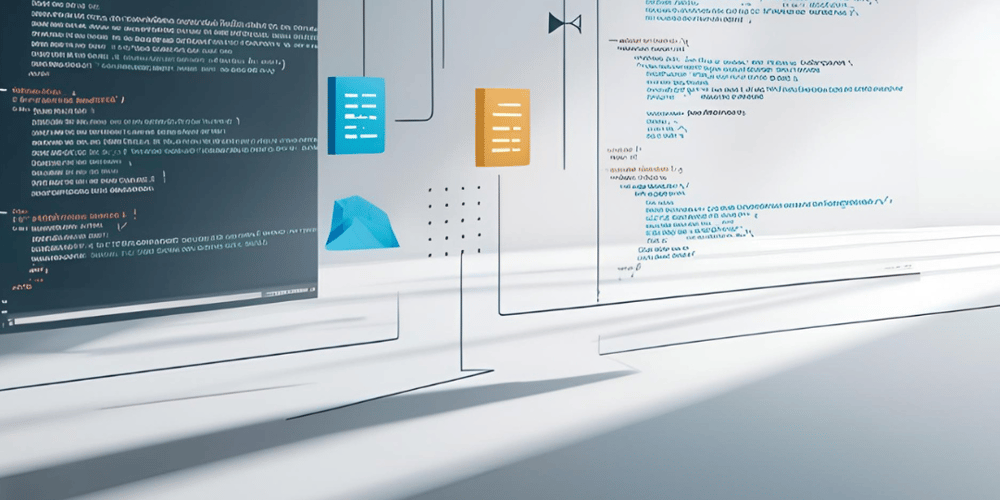Understanding the OSI Model and How It Aligns with the TCP/IP Model
In the digital era, networking is the invisible backbone that supports our connected world. To understand how devices communicate across networks, it is essential to grasp the concepts of the OSI (Open Systems Interconnection) model and the TCP/IP model. These models serve as frameworks for understanding the complex processes behind network communications. In this blog, we will explore the OSI model in depth and compare it with the TCP/IP model for practical understanding. What is the OSI Model? The OSI model, developed by ISO (International Organization for Standardization), is a conceptual framework that standardizes the functions of a telecommunication or computing system into seven distinct layers. Each layer serves a specific function and communicates with the layers directly above and below it. The 7 Layers of the OSI Model: 1. Physical Layer Deals with the physical connection between devices. Handles the transmission and reception of raw bit streams over a physical medium. Example: Ethernet cables, repeaters. 2. Data Link Layer Ensures error-free data transfer between adjacent nodes. Divides data into frames. Example: Switches, MAC addresses. 3. Network Layer Handles the delivery of packets across different networks. Manages addressing and routing. Example: Routers, IP addresses. 4. Transport Layer Ensures complete data transfer. Responsible for flow control and error correction. Example: TCP, UDP. 5. Session Layer Manages sessions or connections between applications. Controls the dialogues between computers. 6. Presentation Layer Translates data between the application and the network. Handles encryption, compression, and translation. 7. Application Layer Closest to the end user. Provides services like email, file transfer, and web browsing. Example: HTTP, FTP, DNS. Diagram OSI Model Layers What is the TCP/IP Model? The TCP/IP model is a more practical and simpler framework developed by the U.S. Department of Defense. It is the foundation of the internet and consists of four layers: Network Interface Layer Internet Layer Transport Layer Application Layer Mapping TCP/IP to OSI TCP/IP Layer Corresponding OSI Layers Application Application, Presentation, Session Transport Transport Internet Network Network Interface Data Link, Physical Diagram OSI vs TCP/IP Key Differences Between OSI and TCP/IP Models TCP/IP Model OSI Model Conceptual framework Practical framework 7 layers 4 layers Developed by ISO Developed by DARPA/DoD Strict layer separation Layers can interact more freely Rarely used in practice as-is Forms the basis of the Internet Why Understanding Both Models Matters Understanding both models provides clarity when diagnosing network issues, designing systems, or studying for certifications. While the OSI model offers theoretical precision, the TCP/IP model gives us the practical lens of how networking is implemented today. Conclusion In conclusion, the OSI model is a detailed, layered approach to network architecture that aids in understanding and designing communication systems. The TCP/IP model, though simpler, is more aligned with real-world protocols and applications. Mastering both models will not only enhance your technical knowledge but also strengthen your foundational understanding of computer networks.
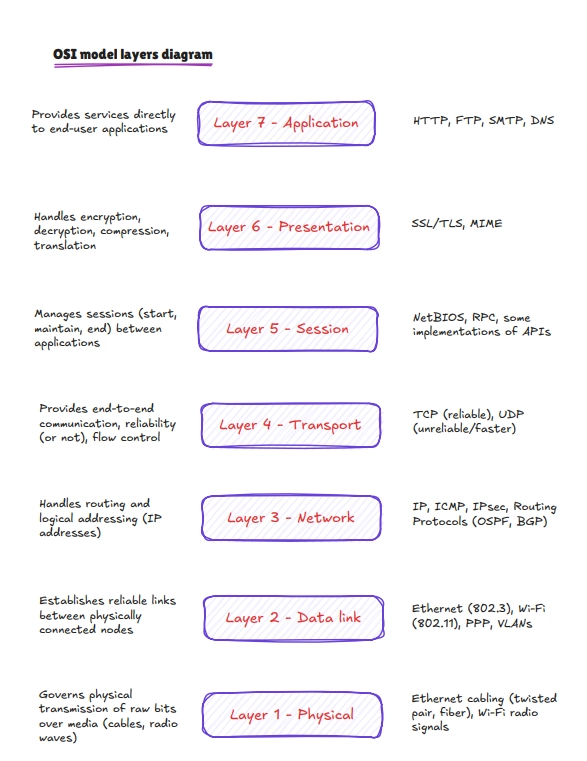
In the digital era, networking is the invisible backbone that supports our connected world. To understand how devices communicate across networks, it is essential to grasp the concepts of the OSI (Open Systems Interconnection) model and the TCP/IP model. These models serve as frameworks for understanding the complex processes behind network communications. In this blog, we will explore the OSI model in depth and compare it with the TCP/IP model for practical understanding.
What is the OSI Model?
The OSI model, developed by ISO (International Organization for Standardization), is a conceptual framework that standardizes the functions of a telecommunication or computing system into seven distinct layers. Each layer serves a specific function and communicates with the layers directly above and below it.
The 7 Layers of the OSI Model:
1. Physical Layer
- Deals with the physical connection between devices.
- Handles the transmission and reception of raw bit streams over a physical medium.
- Example: Ethernet cables, repeaters.
2. Data Link Layer
- Ensures error-free data transfer between adjacent nodes.
- Divides data into frames.
- Example: Switches, MAC addresses.
3. Network Layer
- Handles the delivery of packets across different networks.
- Manages addressing and routing.
- Example: Routers, IP addresses.
4. Transport Layer
- Ensures complete data transfer.
- Responsible for flow control and error correction.
- Example: TCP, UDP.
5. Session Layer
- Manages sessions or connections between applications.
- Controls the dialogues between computers.
6. Presentation Layer
- Translates data between the application and the network.
- Handles encryption, compression, and translation.
7. Application Layer
- Closest to the end user.
- Provides services like email, file transfer, and web browsing.
- Example: HTTP, FTP, DNS.
Diagram OSI Model Layers
What is the TCP/IP Model?
The TCP/IP model is a more practical and simpler framework developed by the U.S. Department of Defense. It is the foundation of the internet and consists of four layers:
Network Interface Layer
Internet Layer
Transport Layer
Application Layer
Mapping TCP/IP to OSI
| TCP/IP Layer | Corresponding OSI Layers |
|---|---|
| Application | Application, Presentation, Session |
| Transport | Transport |
| Internet | Network |
| Network Interface | Data Link, Physical |
Diagram OSI vs TCP/IP
Key Differences Between OSI and TCP/IP Models
| TCP/IP Model | OSI Model |
|---|---|
| Conceptual framework | Practical framework |
| 7 layers | 4 layers |
| Developed by ISO | Developed by DARPA/DoD |
| Strict layer separation | Layers can interact more freely |
| Rarely used in practice as-is | Forms the basis of the Internet |
Why Understanding Both Models Matters
Understanding both models provides clarity when diagnosing network issues, designing systems, or studying for certifications. While the OSI model offers theoretical precision, the TCP/IP model gives us the practical lens of how networking is implemented today.
Conclusion
In conclusion, the OSI model is a detailed, layered approach to network architecture that aids in understanding and designing communication systems. The TCP/IP model, though simpler, is more aligned with real-world protocols and applications. Mastering both models will not only enhance your technical knowledge but also strengthen your foundational understanding of computer networks.


![Apple Considers Delaying Smart Home Hub Until 2026 [Gurman]](https://www.iclarified.com/images/news/96946/96946/96946-640.jpg)































































![Tariffs Threaten Apple's $999 iPhone Price Point in the U.S. [Gurman]](https://www.iclarified.com/images/news/96943/96943/96943-640.jpg)
![iPhone 17 Pro Won't Feature Two-Toned Back [Gurman]](https://www.iclarified.com/images/news/96944/96944/96944-640.jpg)



































































































 (1).webp?#)




_Christophe_Coat_Alamy.jpg?#)











































































![[The AI Show Episode 142]: ChatGPT’s New Image Generator, Studio Ghibli Craze and Backlash, Gemini 2.5, OpenAI Academy, 4o Updates, Vibe Marketing & xAI Acquires X](https://www.marketingaiinstitute.com/hubfs/ep%20142%20cover.png)

























































































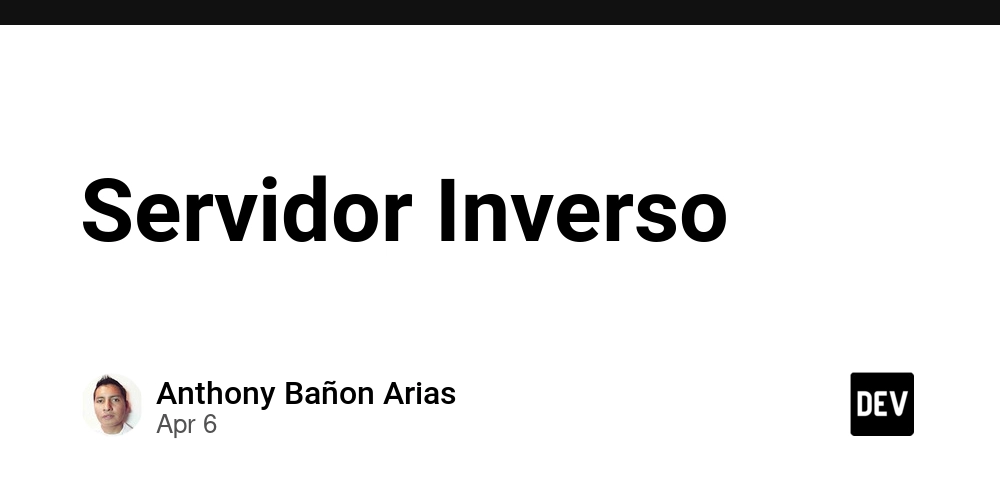
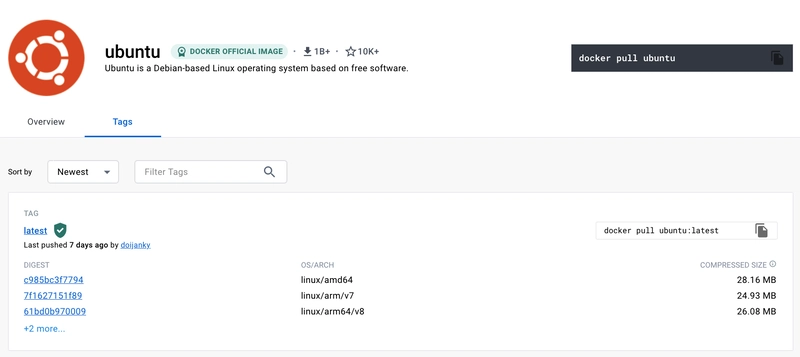





































![From drop-out to software architect with Jason Lengstorf [Podcast #167]](https://cdn.hashnode.com/res/hashnode/image/upload/v1743796461357/f3d19cd7-e6f5-4d7c-8bfc-eb974bc8da68.png?#)



![[DEALS] The Premium Learn to Code Certification Bundle (97% off) & Other Deals Up To 98% Off – Offers End Soon!](https://www.javacodegeeks.com/wp-content/uploads/2012/12/jcg-logo.jpg)


































.png?#)


















































